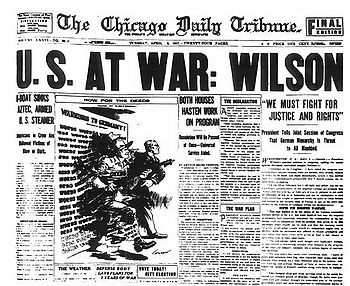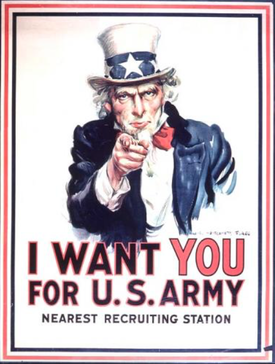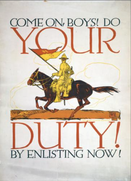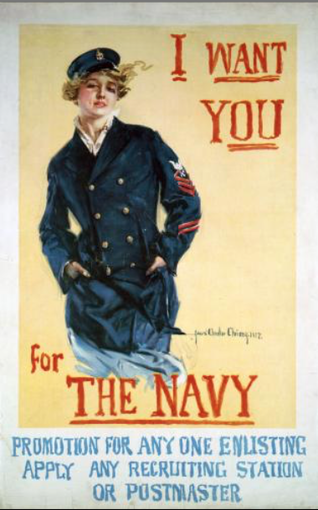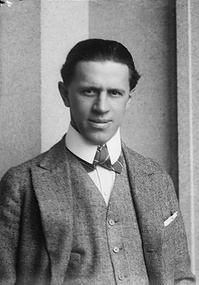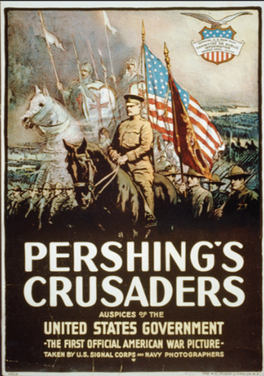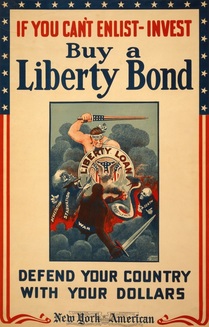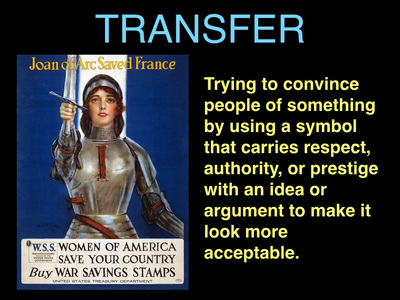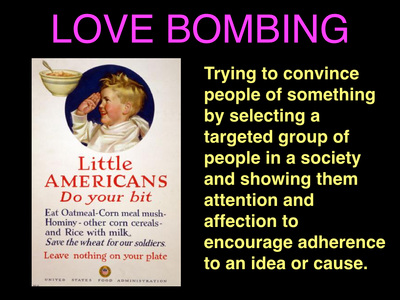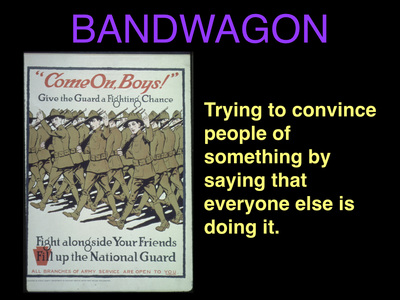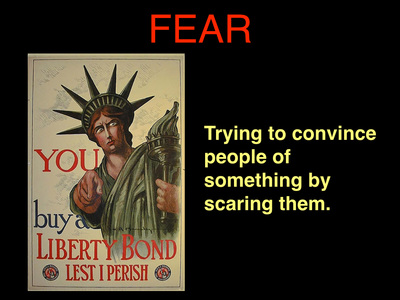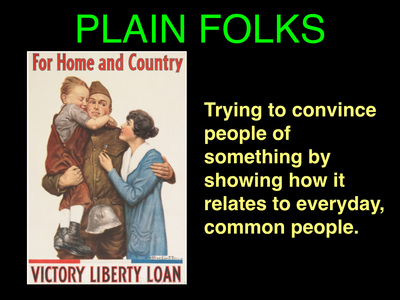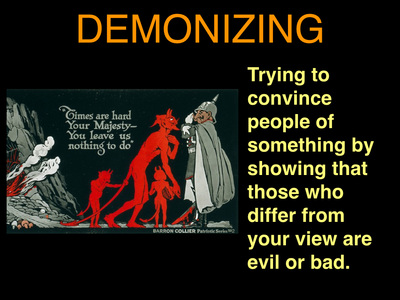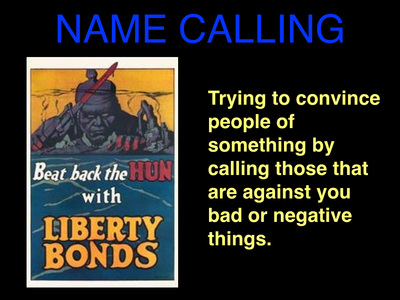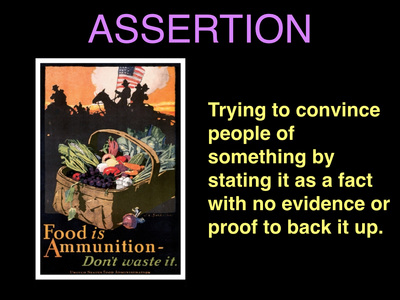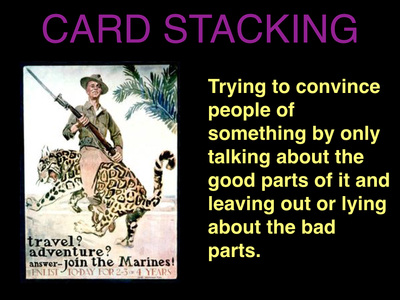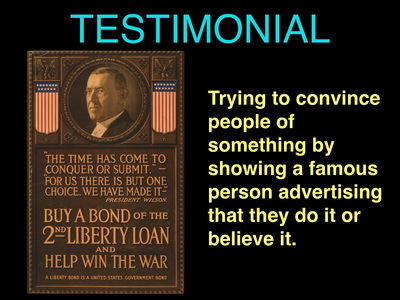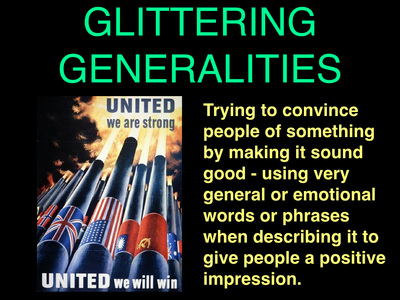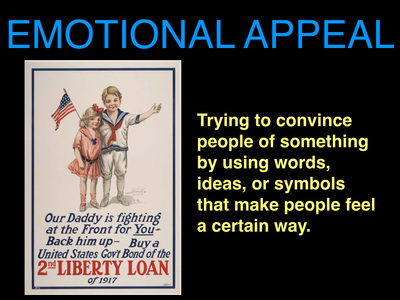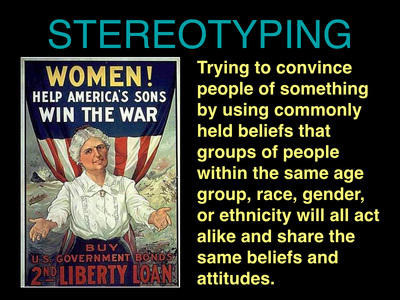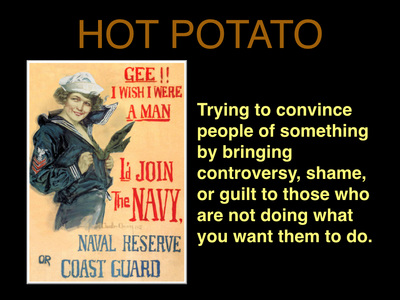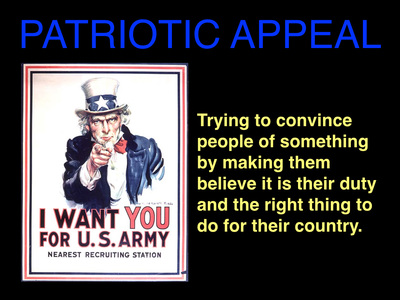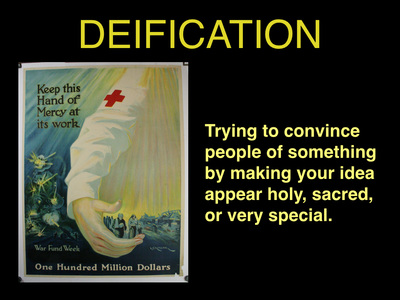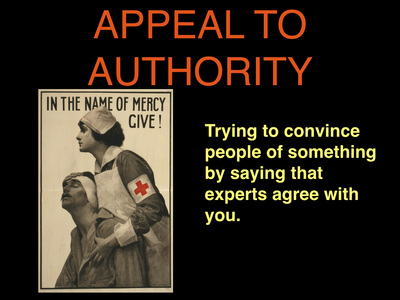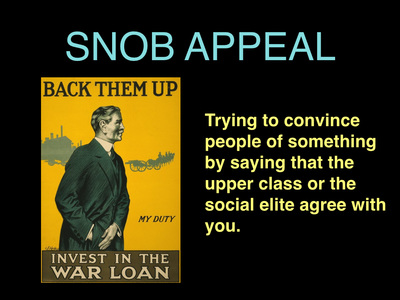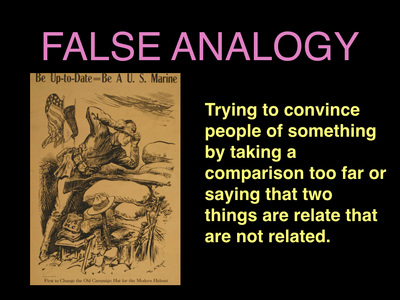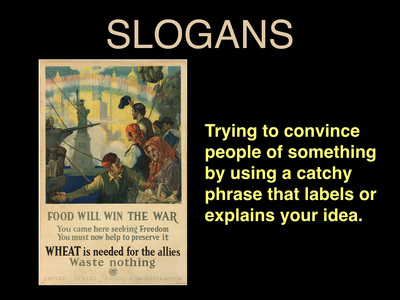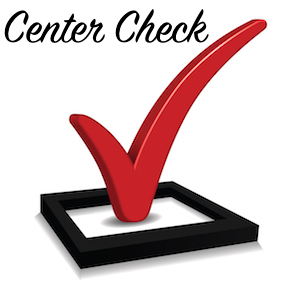PUSHING US TOO FAR
READ ABOUT IT!
Welcome to the American Propaganda Virtual Center. The first thing your group needs to do is read about American Propaganda to join World War I. After you read, you need to work together to complete the American Propaganda Center Page in your Lesson Chronicles.
UNITING THE NATION
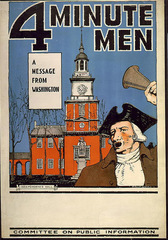 4 Minute Men Propaganda Poster
4 Minute Men Propaganda Poster
By the end of World War I, Creel had 150,000 people working on the propaganda campaign for the Committee on Public Information. According to Creel’s own statistics, the 4-minute men delivered 7,555,190 speeches to a total audience of 314,454,514. Given that the total population of the country was around 103,000,000, each American heard an average of 3 speeches during the 19-month war effort. Creel's propaganda campaign was greatly successful. He changed the hearts and minds of most Americans and had them investing money and volunteering time to help the effort.
Herbert Hoover and the U.S. Food Administration
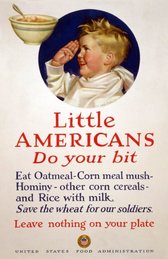
When America declared war on Germany on April 6, 1917 President Wilson put Herbert Hoover in charge of the U.S. Food Administration. The U.S. Food Administration was an organization in charge of providing food for the American and Allied armies as well as the American people at home. Herbert Hoover used propaganda to convince Americans to conserve or save food. He called his program food conservation, but many Americans called it "Hooverizing." The most popular examples of food conservation during World War I were wheatless Wednesdays and meatless Mondays.
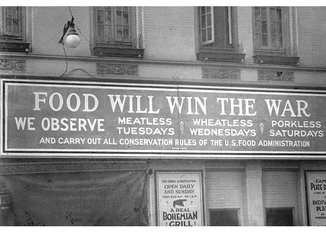
Hoover had faith that the American people would conserve food willingly without having to use rationing. Rationing is allowing a person or group of people to only have a set amount of something each day for a certain length of time. Hoover used several strategies to get Americans to voluntarily conserve food. First, he worked to gain the support of housewives to conserve food and stop waste. He made signs, posters, and banners that read, "Food Will Win the War." By doing this he cut down the amount of food people ate in America by 15% without rationing.
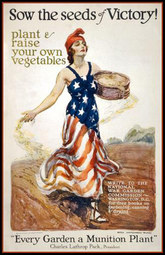
Hoover also worked with farmers to grow more food for the troops. He promised that farmers would all get a fair price for the food they grew and he guaranteed the U.S. would buy any surplus crops as well. The result was that U.S. food shipments to the troops tripled. He kept the American armies fed and was able to build up surplus warehouses of food to keep Europe from starving after the war was over.
ANALYZE IT!
PART 1: PROPAGANDA GALLERY
Today's Analyze It Activity is in two parts. For Part 1, you and a partner will work together to learn about the different types of Propaganda using World War I Propaganda Posters. For each artifact in the gallery, read about what type of Propaganda is being used. Then discuss what you believe the message of the propaganda to be. In other words, what is this propaganda saying? What is it for? Is there a target audience in this propaganda? Who is it? Why do you think they were targeted? Was the propaganda effective in your opinion? Why or why not? Use the graphic organizer handout below to guide your thought process. I will hand out paper copies in class.
(You can see a larger image of each artifact by clicking on the picture.)
(You can see a larger image of each artifact by clicking on the picture.)
PART 2: MAKING PROPAGANDA
For Part 2 of the Analyze It Activity, you will create your own Propaganda Poster. Think of something at Moody Middle School that you would like to do or change. Determine whom your audience is. Who are you trying to convince? What type of propaganda might persuade your audience? Now create a propaganda poster for your cause. If you do not finish, do it for homework. If you finish early, go on to the extension activity below.
EXTENSION
If you finish early click on the icons below to view other galleries of World War I Propaganda.
PROVE IT!
You just learned about American Propaganda in World War I. Now you need to show off what you know. Complete the Center Check by clicking on the Center Check Icon below and answering the questions.
CENTER COMPLETE!
You have completed the American Propaganda Virtual Center. Click on the button below to go back to the Lesson 3 - America Enters World War I.

